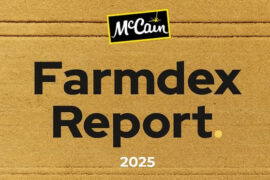Pakistan’s fish farmers and entire aquaculture industry have a new resource to encourage success, the Aquaculture Handbook – Fish Farming and Nutrition in Pakistan. The American Soybean Association’s (ASA) World Initiative for Soy in Human Health (WISHH) produced it through the US Department of Agriculture-funded “FEEDing Pakistan” project.
Released on January 27 at a launching ceremony in Karachi, the handbook shares knowledge gained during the three-year FEEDing Pakistan project as well as insight from international experts. WISHH’s FEEDing Pakistan has assisted approximately 2,000 fish farmers in the country and helped increase the market value of tilapia produced there from next to nothing at the beginning of the project to an estimated 450 million rupees (US $4.5 million) in 2014.
“We congratulate Pakistan’s fish farmers, academics, members of the private sector and government officials. Their participation and dedication to increased knowledge resulted in quick adoption of new technologies and best management practices,” said R.S.N. Janjua, who leads the project as ASA/WISHH Country Representative. “Rapid acceptance and investment in new ideas, including soy-based floating fish feed, is scaling up Pakistan’s aquaculture industry to help fill the country’s protein gap in human diets and contribute to the food security of Pakistan.”
“Consumer demand for tilapia has also spilled over to an increased demand for better quality carp and trout,” said University of Arizona College of Agriculture Director of International Programs Kevin Fitzsimmons.
An ASA/WISHH assessment found that Pakistan had an extensive system of fish farming but no commercial, high-protein, floating, extruded fish feeds were produced in the country. To implement FEEDing Pakistan, ASA/WISHH chose to partner with Kansas State University (KSU) to capitalize on its world-renowned expertise in feed production technology.
KSU conducted training courses on fish feed manufacturing and best management aquaculture practices with University of Arizona collaboration. In addition, KSU provided technical assistance to industry stakeholders.
Results of FEEDing Pakistan include a project trainee and co-owner of a Pakistani company, Oryza Organics Pvt. Ltd., who established the nation’s first extruder dedicated to the production of floating fish feed. Another trainee, the chief executive officer of Tawakkal Fish Farms, started buying the soy-based floating fish feed from Oryza. Tawakkal has made multiple investments in their facility, creating the first private-sector tilapia hatchery in Pakistan. This year, Tawakkal plans to sell approximately three million young tilapia to other farmers, and in the future, to expand to 10 million tilapia fry per annum.
During the project, ASA/WISHH provided US-soy formulated floating feed for feeding demonstrations reaching hundreds of farmers. FEEDing Pakistan demonstration tilapia fish averaged 600 grams per fish – double the weight of traditional domestic fish harvests. The tilapia sold for a premium price in the local marketplace and increased enthusiasm for further development of Pakistan’s aquaculture industry with soy-based fish feeds. The nation’s fish farmers had never seen such results. ASA/WISHH also worked directly with a variety of farmers who are now selling live tilapia in multiple markets.
Aquaculture Handbook – Fish Farming and Nutrition in Pakistan contains 12 chapters on the entire farm-to-consumer aquaculture value chain. Lead editor is Kevin Fitzsimmons, Ph.D., past president of the World Aquaculture Society. Co-editor is R.S.N. Janjua, Ph.D. Local lead author is Muhammad Ashraf, Ph.D., Dean, Faculty of Fisheries and Wildlife, University of Veterinary and Animal Sciences, Pattoki Campus, Punjab-Pakistan.





